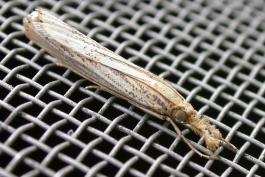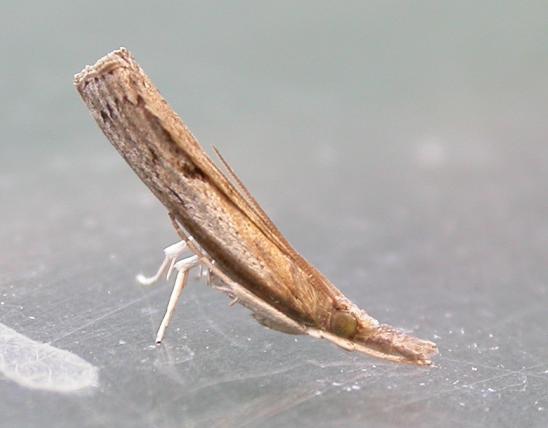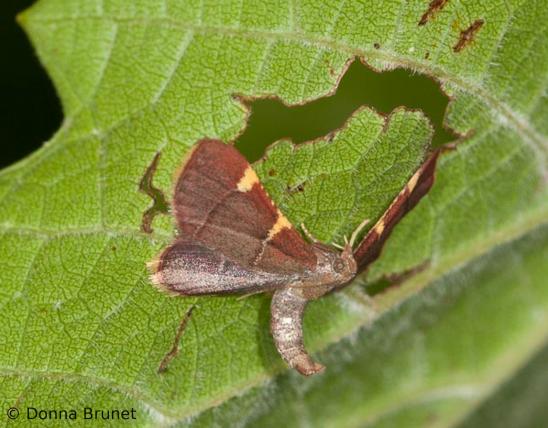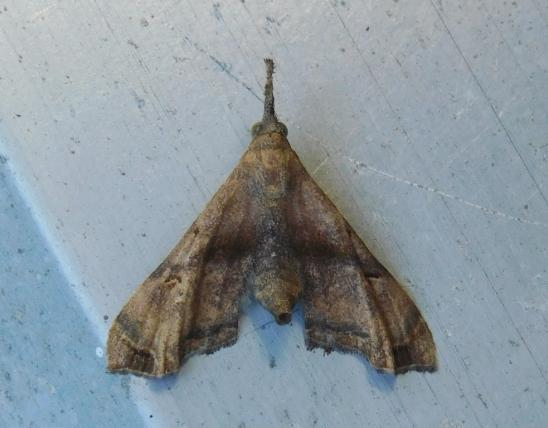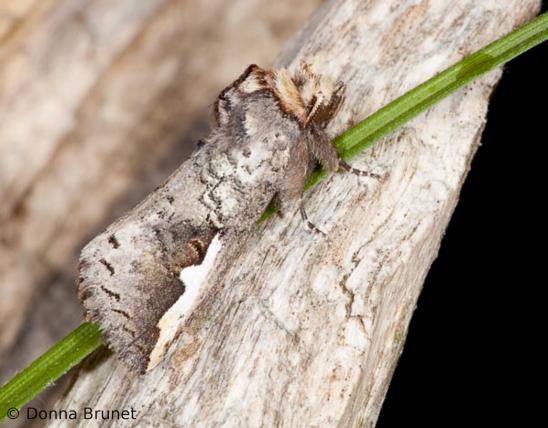
The sod webworm is one of more than 860 species of crambid snout moths in North America. Coloration is variable but usually drab grays, tans, and browns. Markings are a subtle arrangement of lines, dots, and patches, best seen in pinned specimens. One clue is a checkered-looking pattern of alternating patches of gray and white scales forming the fringe along the outer edge of the forewing.
Like many other snout moths, they typically rest with wings rolled up along their bodies, so they look like a short twig. Sometimes, they hold their abdomen and rolled wings up at an angle.
Sod webworms are very common. Most people see them flying low over lawn grasses. Their caterpillars live among the upper roots and lower stems of grasses. When abundant, they can damage lawn grass during the hottest months, when cool-season grasses grow less vigorously.
Adults are also often seen at lights at night, or resting on buildings near places where lights had shone all evening. They may be seen in Missouri from May through the first freezes of October.
Like other types of snout moths, they have mouthparts (palpi) that project outward like a snout. The sod webworm and other species in the crambid snout moth family can be difficult to separate from members of the pyralid family.
Learn more about this and other crambid snout moths on their group page.
Human Connections
Sod webworms are disliked by the owners of golf courses or by people in pursuit of the great American lawn. Lawn pest services and the manufacturers and sellers of pest-control products profit from the stubborn existence of sod webworms and other sod-munching insects.
Ecosystem Connections
Plants that do not feed insects do not serve much of an ecological role. Insects that feed on plants can become food for birds, shrews, and other insect-eating wildlife. Sod webworms are humble creatures that transform plant nutrients into the high-protein form of their own bodies: In a very real way, this is what bird food looks like.


